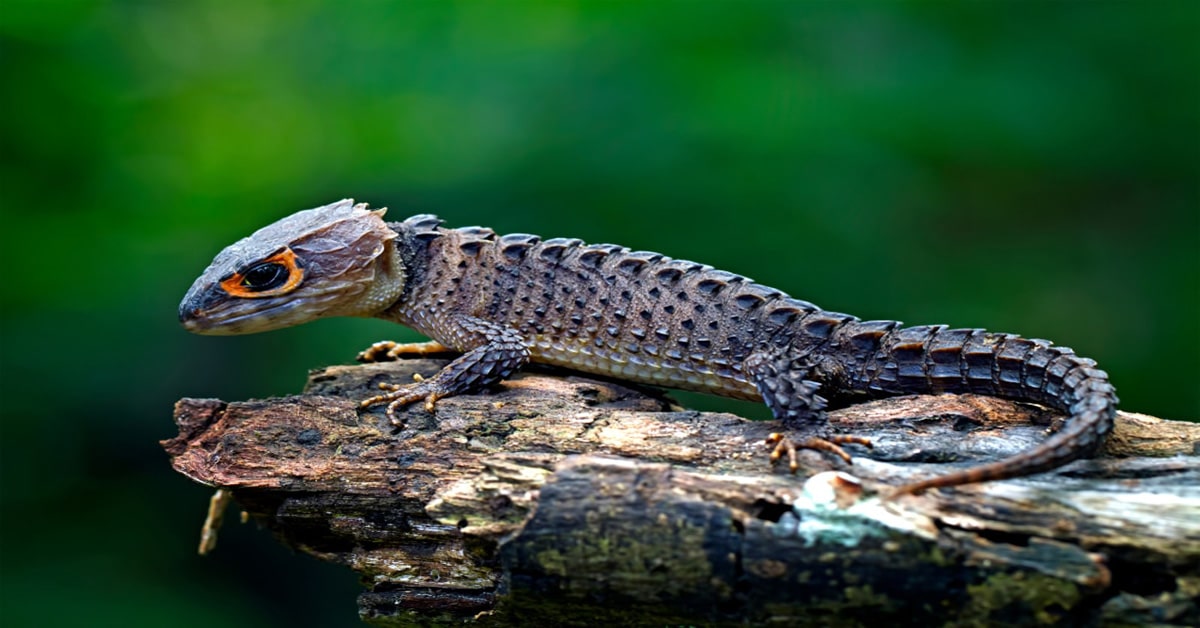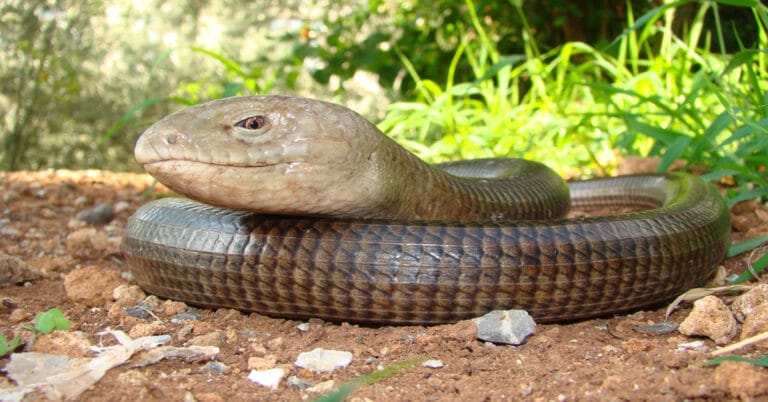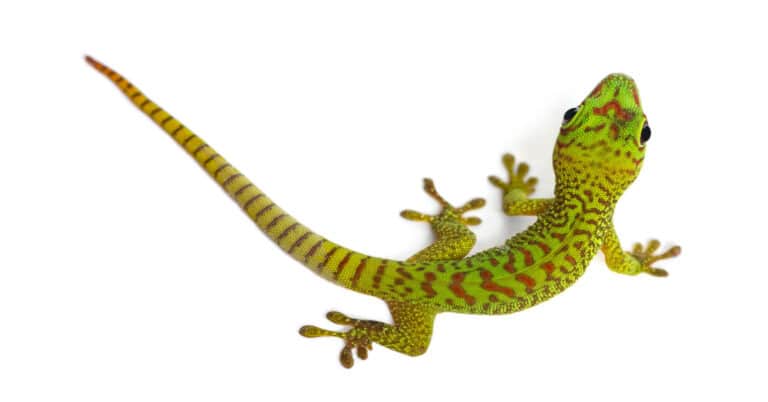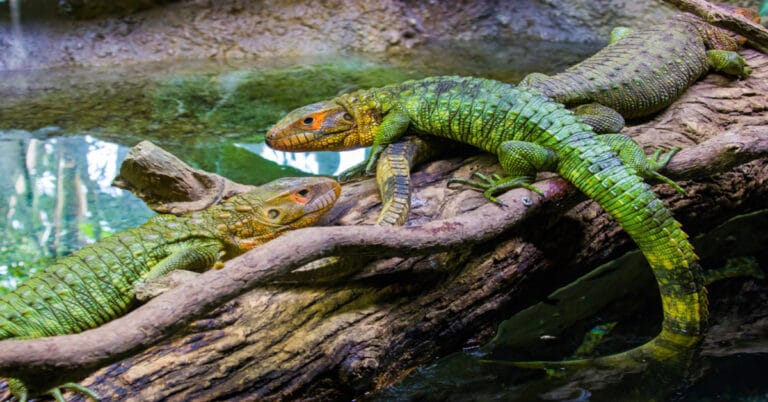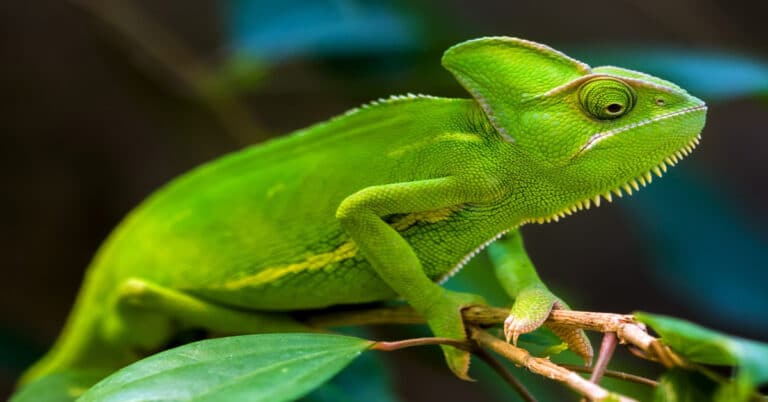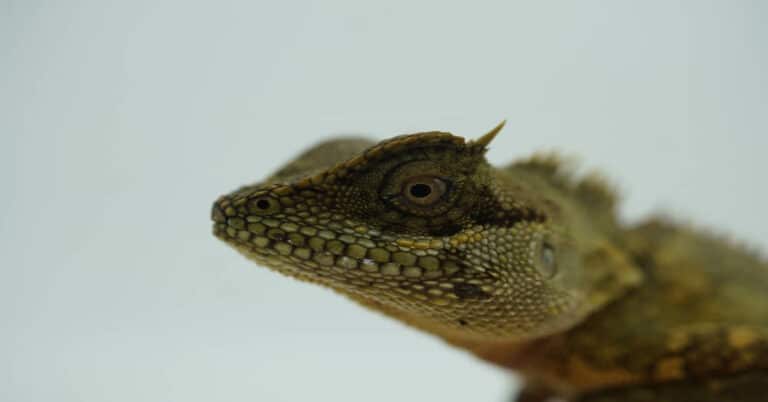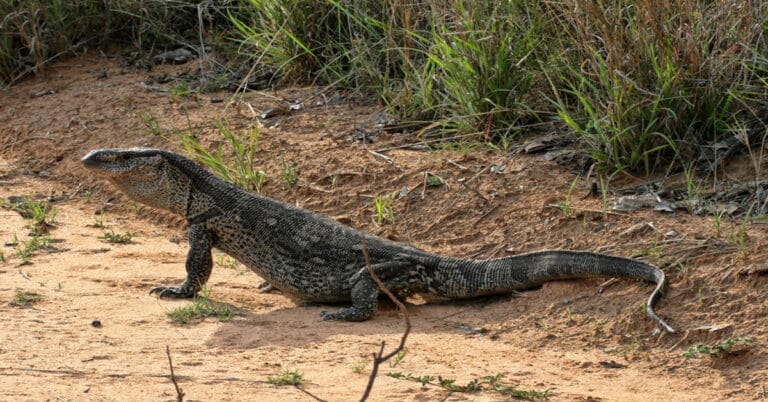Red Eyed Crocodile Skinks
Scientific Classification
| Kingdom: | Animalia |
| Phylum: | Chordata |
| Subphylum: | Vertebrata |
| Class: | Reptilia |
| Order: | Squamata |
| Suborder: | Sauria |
| Infraorder: | Scincomorpha |
| Family: | Scincidae |
| Genus: | Tribolonotus |
| Species: | T. gracilis |
| Binomial name: | Tribolonotus gracilis |
Crocodile Skinks belong to the species Tribolonotus gracilis. They also call it, though rarely, Red-Eyed Crocodile Skinks or bush crocodile skinks. The genus has eight documented sub-species. Crocodile skinks are the common sub-species of the genus that we can find in captivity. You can find these skinks in lush tropical forests and wooded, humid locations in the close vicinity of water. These shy creatures are at their energetic best during dawn and dusk since they are crepuscular (active at dawn and dusk) in nature, The rest of the time, they spend in hiding under litter or debris. The orange or red rings that encircle their prominent black eyes give them a charisma of their own.
Crocodile skinks look like small crocodiles rather than members of the skink species, for which reason people refer to them as red-eyed crocodile skink or red-eyed bush crocodile skink. There are rough scales on the body with three rows of spiny projections, which run down their spine to their tail’s base.
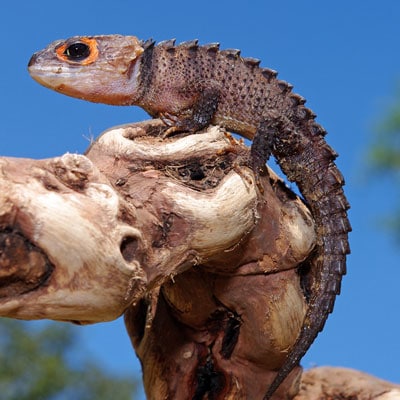
Anatomy
These red-eyed crocodile skinks are at birth around 2.5 inches long. As adults, they measure 8 to 10 inches from the tip of the tail to the nose. Their average weight is around 36 to 45 grams. The juvenile skinks and the hatchlings are brownish black colored. You can find different amounts of yellow or cream color on the heads and scales.. When they mature, they grow darker and develop the characteristic red or bright orange rings around their eyes that earn them their name, Red eyed Crocodile Skink. Their underbellies have a creamy appearance. These skinks have large triangular shaped heads. Running along their tails and back, we can see four rows of ridged, pointed and bony scales or vertebral spines, as they are called These scales, along with the textured leather-like skin, give them the appearance of crocodiles, that have earned the sinks their name.
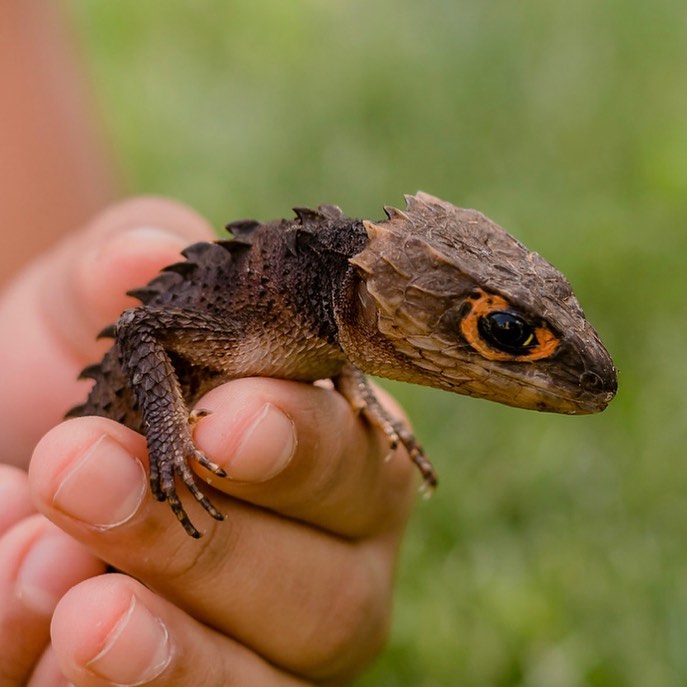
Behavior
The Crocodile skinks behave very differently from other lizard species. In fact, crocodile skinks are one of the few lizard species that can cry out or vocalize when in trouble. When you startle them, they just freeze and play possum. They will play dead even when you try to handle them.
Habitat
This species of Crocodile skinks confine to New Guinea. We can find them, usually in humid, tropical forests. You can also find them in areas populated by humans.
As a Pet
Breeding
These Skinks mature rather slowly. They reach sexual maturity when they are around 3 or 4 years old. We can identify the mature skinks by the characteristic orange color markings under the chin. This method of identifying a mature skink is not foolproof since these colored marks fade in and out of younger skinks, There are three ways to determine the sex of a red-eyed crocodile skink.
These skinks attain sexual maturity when they are around three years of age. The male adults are bigger than the adult females. You should never keep two males of the species together. They will certainly fight. The fight might end up in the death of one or both of the combatants. To keep these pets healthy, you must give them vitamins and minerals. Calcium is a must, especially for the females as they need it for egg-building and laying. You can breed crocodile skinks round the year. The female that has only one ovary that works, lays just one egg every four or six weeks. The female deposits the egg in a dark, moist area in the vivarium. The parents do guard the eggs till they hatch. Sometimes, they hide or bury their eggs. The eggs have a variable gestation period. Usually it is around sixty-five days. The hatchlings are generally around 6 to 9 centimeters long and weigh around three grams. Quite unlike some of the lizards like the Leopard Gecko, the skinks’ hatching sex ratio does not depend on the temperature. You can house all the young skinks together and keep them like you do the adults.
Housing

The Red Eyed-Crocodile skinks manage well when you keep them alone or in Male-female pairs. Males should not be housed together since they are territorial and will definitely fight. A 20 gallon enclosure will do well for a skink or a pair of skinks. You should provide for them enough foliage and cover, especially for a pair as they need separate spaces to retreat. Wood, logs, cork bark and ready-made hides as well as real or artificial plants would provide sufficient cover for these lizards. It is essential that you provide a shallow pool since the skinks, spend most of their time swimming. They also use the water to help with shedding. You can add rocks to deeper pools to help the skinks climb in and out. This will also help to prevent their drowning. You have to check the water every day since the skinks sometimes defecate in the pool.
Humidity
Crocodile skinks require a higher humidity level than most other lizards. Since the Crocodile skinks come from very humid forest areas, the substrate that you provide should replicate the humid forest condition. More important, the substrate should be able to hold and retain moisture and thereby make the vivarium humid enough. These creatures need 70 to 90% humidity level, which is rather high. . It would be better to provide a substrate of Coco fiber or peat moss to help in humidity as well as burrowing. You can also use a mix of coco bricks and orchid bark along with sphagnum moss for this purpose. You can also plant some terrarium plants to achieve the correct humidity levels. You can spread hides on the substrate to make a humidity hide. The substrate can be 4 to six inches thick.
Misting
It is important that you do daily misting. A running water source and a misting system, with live plants will help to maintain humidity in the enclosure. Make sure that the skinks get sufficient misting and have enough dry places to take cover.
Occasional misting will definitely help. Crocodile skinks tend to fall prey to eye-infections. If the humidity level is low, there will be dust in the vivarium, Eye infections can cause visual damage and even death for your pets. You can also provide additional items like branches and other vivarium décor items. It will certainly help to ensure that their claws are down. Make sure to provide a large water dish that is shallow enough. Ideally, the water dish should not be more than 1” deep.
Lighting and Temperature
Crocodile skinks will happily use basking areas if they are available. The acceptable basking temperature is 86 Degree F. Higher temperatures can cause much stress and even death of the creatures. The consensus is on a day time range of 70 to 75 degree F on the cool end and a night time temperature of 65 degree F. In fact, a UVB housed at room temperature might make supplemental sources unnecessary.
A UVB light can provide sufficient heat to reach the required temperatures and renders additional heat sources superfluous.
You would do well to use UVB full spectrum lighting with a 12 to 14 light cycle to maintain the health and life span of the skink. They are very active at dawn and dusk. The light cycle should accommodate this crepuscular nature.
Food
Handling
You must pay a lot of attention to the dietary requirements of your red eyed crocodile skinks. Being insectivorous, you have to give them sufficient sized gut loaded prey items like earthworms, silkworms, worm larvae, meal worms, meal worm beetles, crickets and the like. Some skinks go for only one or two of these at a time, whereas others like variety. You should dust the prey you offer with Calcium and vitamin D3 supplements before feeding juvenile skinks, hatchlings and alternately, adults. You should give multivitamin supplements with vitamin D3 or both, at least once a week. You can feed the skinks every alternate day. The adults, on the other hand, you can feed every three or four days. They are very shy. We can seldom see them eat. As a rule, we should monitor their food consumption and defecation to make sure that they are eating their food sufficiently. It is better to leave them to their own devices, whenever possible.
The Crocodile skinks are basically very shy creatures. They seldom bite. They may, if circumstances compel them to do so. You would do well not to handle them frequently. When you try to handle them, they may jump, run for cover, freeze, vocalize, or just play dead. In certain cases, they may even shed their tails. Some skinks do tolerate some handling a little better than others. Until they become used handling, it is better to begin by trying to handle them in the enclosure itself or very close to the floor in a safe location. You must tailor your handling to a level the skink can accommodate. When we handle them roughly, they may drop their tails. The tail will eventually re -grow, but certainly, it will not be the same as before. There will be health complications for your pet resulting from stress and infection from the wound is possible.

Having discovered a fondness for insects while pursuing her degree in Biology, Randi Jones was quite bugged to know that people usually dismissed these little creatures as “creepy-crawlies”.

